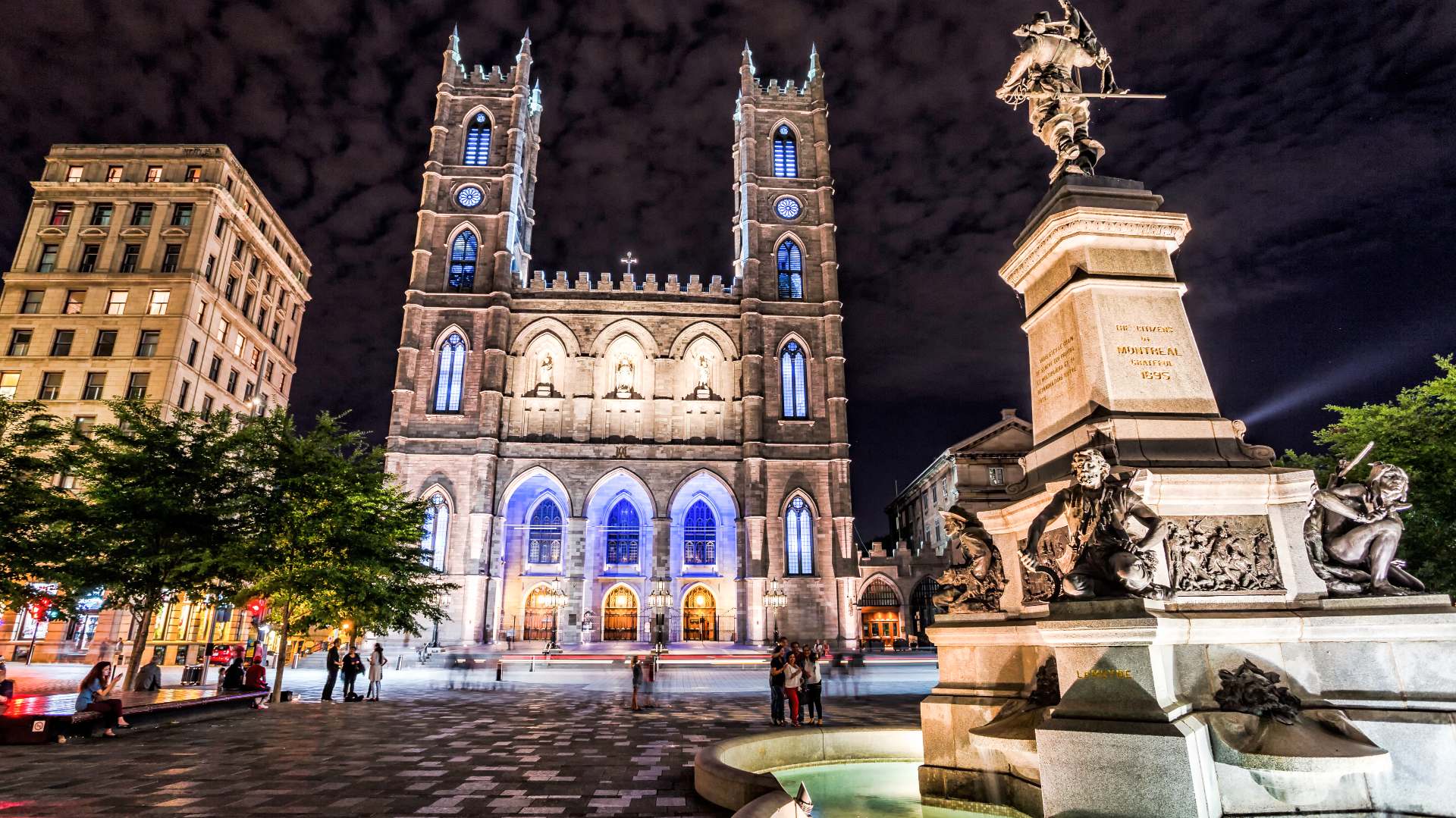The Gaspésie — as it’s known locally — is a peninsula stretching along the southern shore of the St. Lawrence River. The region, which is one of Quebec’s lesser-explored areas, includes sweeping coastal viewpoints, stunning mountain peaks and warm maritime welcomes.
Much to the pleasure of outdoor lovers, the winter weather during the holiday season transforms the landscapes of Gaspésie: The massive St. Lawrence River freezes solid in places, the mountains become blanketed in snow, and the iconic Percé Rock becomes trapped in ice.
In total, the trip between Montreal and the town of Gaspé is approximately 900 kilometers (560 miles). While in theory it could be achieved in one very long day, moving at a more leisurely pace, especially during the holidays, will inevitably make the experience more pleasurable. Make it a three-day drive (each way) by adding overnights in Quebec City and in one of the coastal villages along the St. Lawrence River.
Bear in mind that evolving travel restrictions and closures are a new reality, so always check regional statuses before planning a trip.
Start: Montreal

Canada’s cultural capital never fails to impress. During the holiday season, Montreal becomes decorated in twinkling lights, and the air is rich with the smell of wood fires and apple cider.
To experience a cheery Christmas setting while also tasting some local products, head to Atwater Market. If the temperatures are chilly, the canal in Parc La Fontaine freezes and the locals go ice-skating to a soundtrack of classical music. Find one-of-a-kind locally designed clothing, jewelry, housewares, gifts and so much more at the city’s best artisanal winter markets.
Montreal to Quebec City
The main highway (A-20) between the two largest cities in Quebec is fairly direct. For a more scenic route, opt for the Chemin du Roy, a historic highway along the northern shore of the St. Lawrence River.
Old Quebec City is quintessentially European and is exceptionally charming during the holiday season. First-time visitors will want to wander Rue du Petit Champlain. The narrow, cobblestone street is ideal for Instagram portraits or simply wandering with steaming cups of chocolat chaud (hot chocolate). Afterward, head to the annual German Christmas Market, where you’ll find beautiful handcrafted items made in Quebec.
The Musée National des Beaux-Arts du Québec is also well worth a few hours. The fine arts museum is home to more than 40,000 works from the 16th century to the present day and includes some of Quebec’s most prominent painters, sculptors and visual artists. If you decide to stay a few days in Quebec City, go deeper by exploring these less-discovered, but no less iconic neighborhoods.
Quebec City to Rimouski

Ocean lovers, sailors and other swashbucklers will want to drop anchor at the Musée maritime du Québec in a town called L’Islet-sur-Mer. The museum offers a collection of more than 15,000 artifacts, maps, books and old documents. It reflects the many connections that bind Quebecers to the St. Lawrence River.
Southwest of Rimouski, Parc national du Bic is notable for its coastal marine environment, including communities of harbor seals and gray seals. If your legs are craving movement, opt for one of the various paths. (Trail availabilities might vary during different seasons.)
When hunger strikes, don’t miss the holiday baking and other droolworthy treats at Pâtisseries & Gourmandises d’Olivier.
Rimouski to Gaspé
Notably, you’ve entered the traditional lands of the Miꞌkmaq and Haudenosaunee peoples, who used the region for both fishing and hunting. In fact, the common belief is that the name “Gaspé” may come from the Miꞌkmaq word “gespeg,” which means “land’s end.”
This is where the landscapes become far more impressive. Highway 132 hugs the coast of the St. Lawrence River, which itself opens up to a large basin. Various types of whales — including blue whales and beluga whales — visit these waters. If you’re passing through the region when the river is not frozen, keep your eyes peeled for breathy spouts as whales come up for air.
As the highway stretches east of Matane, the landscapes become wilder, the cottages become more colorful and the winds become saltier. This is the Gaspésie that rests in the hearts of Quebecers.

Created in 1970, Forillon National Park was the first national park in Quebec. Much of the park is pure mountain wilderness, with impressive hiking trails that skirt seaside cliff edges and pass through traditional Gaspésie fishing villages. Winter activities in the park include trails for snowshoeing and cross-country skiing and a recently unveiled fatbiking route. Equipment (including bikes) can be rented on site.
The Ville de Gaspé is the regional capital and basecamp for many adventurers as they explore Forillon National Park and other attractions. Tuck in for a holiday feast at Brise-Bise, where you can sample Gaspesian seafood gratin and regional ales. The local windmill factory is a tourist attraction where you can nab a photo beside one of the massive blades.
However, if you want to “do as the locals do,” get thyself on a snowmobile and ride the groomed and marked trails throughout the region. The Gaspésie has more than 3,000 kilometers (1,864 miles) of snowmobile trails, and the Gaspésie tourism bureau has packages, maps and other details.
Bonus: Percé
A few more miles down the highway is the famous Rocher Percé, or “pierced rock.” The massive rock formation is one of the world’s largest natural arches located in water and is unquestionably one of the most iconic images of the province of Quebec. The town of Percé was traditionally a fishing village for European settlers. These days tourism plays a bigger role, with such activities as whale watching, bird-watching and snowmobiling as the big attractions.




